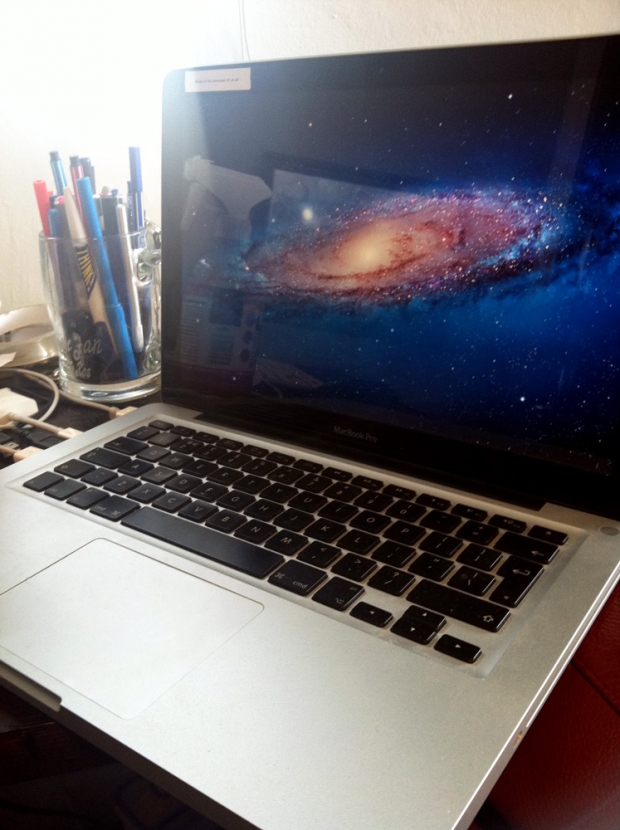
BEFORE: The Apple iPhone 4 has a great camera, but it's struggling with white balance. By using a grey card, I can fix it...
Most cameras are capable of creating 'acceptably good' white balance on your photos. And even if they're failing, you can make a pretty decent guess for what you think the white balance should have been in post production.
But what if you want to take the guesswork out of the equation, and get perfect white balance every time? The professionals use something called a 'gray card' (or 'grey card', depending on where in the world you learned to write English). The name says it all: it's a gray piece of card or plastic that you can use to balance your photographs.
Finding yourself a gray card
 Does that sounds a bit high tech? Well, it really isn't - and the great news is that you can use just about anything that is neutrally coloured. Of course, without advanced colour calibration equipment, it's hard to find something that's actually perfectly neutral. For our purposes, however, you don't need to do that: anything that's just about gray will do. Why? Because once you have your photos balanced consistently, it's easy to make sure they are all well-balanced.
Does that sounds a bit high tech? Well, it really isn't - and the great news is that you can use just about anything that is neutrally coloured. Of course, without advanced colour calibration equipment, it's hard to find something that's actually perfectly neutral. For our purposes, however, you don't need to do that: anything that's just about gray will do. Why? Because once you have your photos balanced consistently, it's easy to make sure they are all well-balanced.
You can use anything that is neutrally coloured, but we would recommend using something that's light gray - it gives the camera the best colour reading, and it makes it easier to do your balancing in post production, too. The lids on coffee cups tend to work pretty well, and personally, I've been using my Macbook. The matt, light silver material is relatively neutral, and since I tend to bring my laptop on photo shoots with me, it's always there when I need it.
Printing off a gray card
If you know what printer you are going to be using to print your images, you could create your own gray card as follows:
1. Open up a photo taken with your camera in Photoshop. This ensures that the correct color profiles are in your image file.
2. Delete the image, and fill the frame with 18% gray.
3. Send the file to your printer, and take it with you on shoots.
The key thing here is that your 'gray card' may not be perfectly neutral, but the important thing is that your printer thinks it is neutral - so if you colour balance your photographs to this particular card, your images should come out neutral when you print them next. Clever, eh?
It could be argued, of course, that if you're serious enough about white balance that you are going to use a gray card, then you may as well buy a set of gray cards that are definitely perfectly colour balanced, but having a home-made set of cards is much better than shooting without anything, so it's a great place to start.
How do you use a gray card? - Whatever you've decided to use as your gray card, the way you use it is pretty simple, and I've covered the process as a video and how-to article; How to use a grey card.
Getting a professional-grade gray card
Of course, you could just decide to go full hog and get a professional gray card. It just so happens that I'm selling some lovely A6-sized cards





